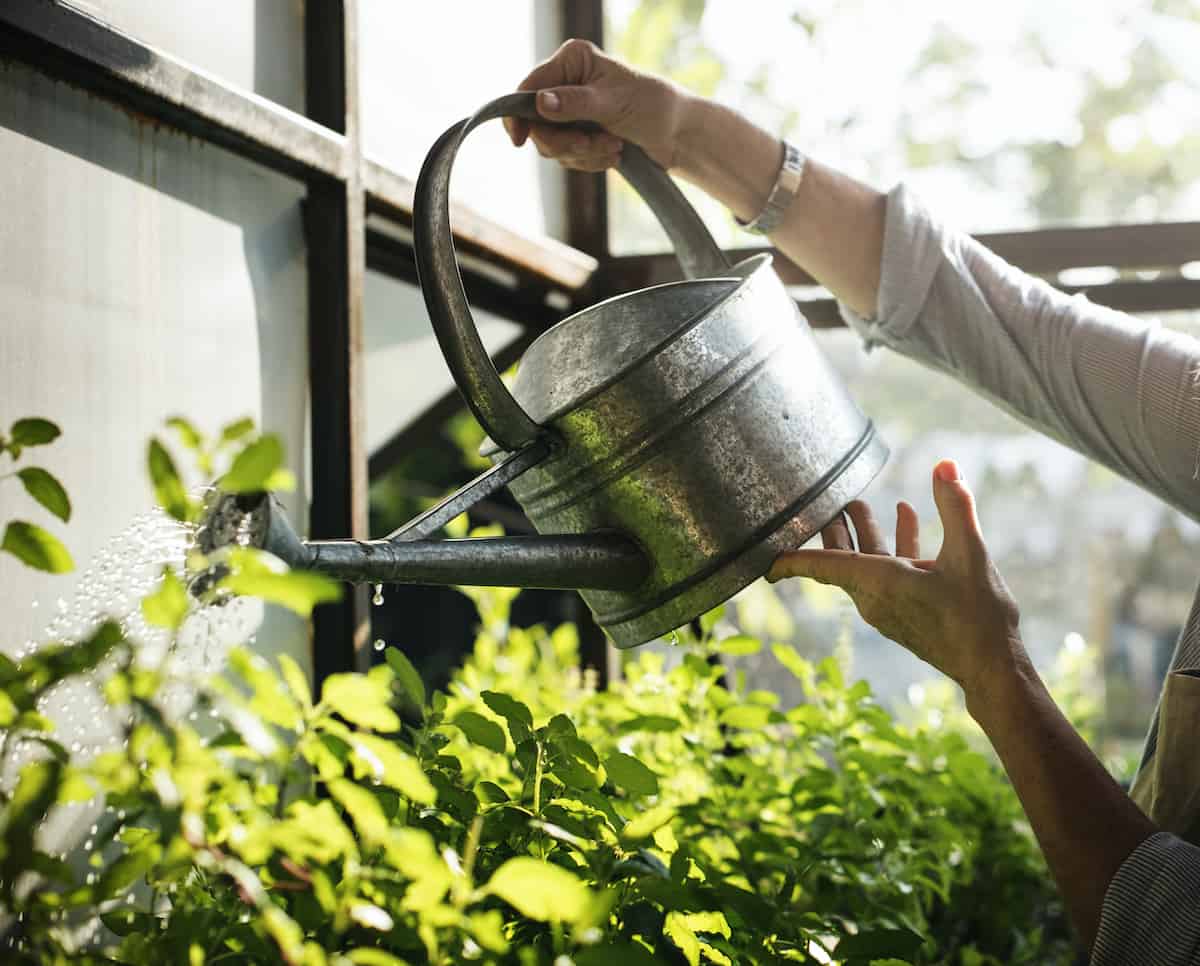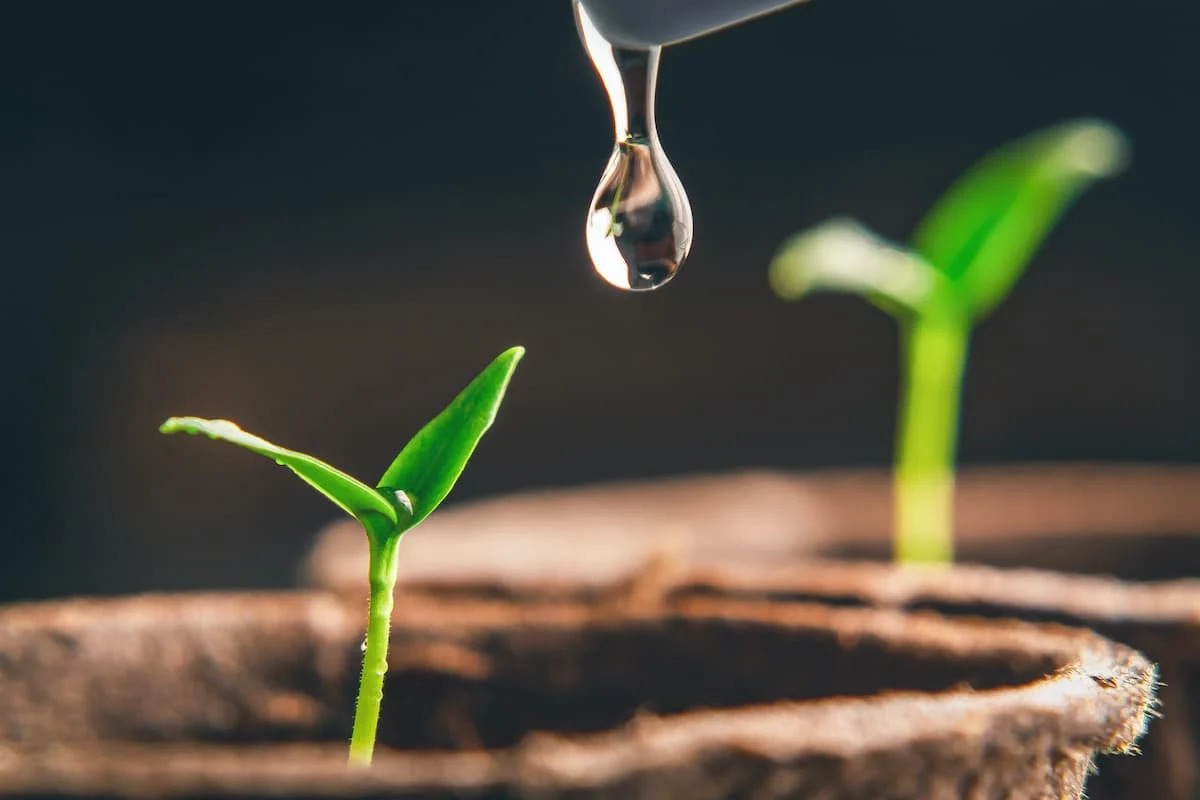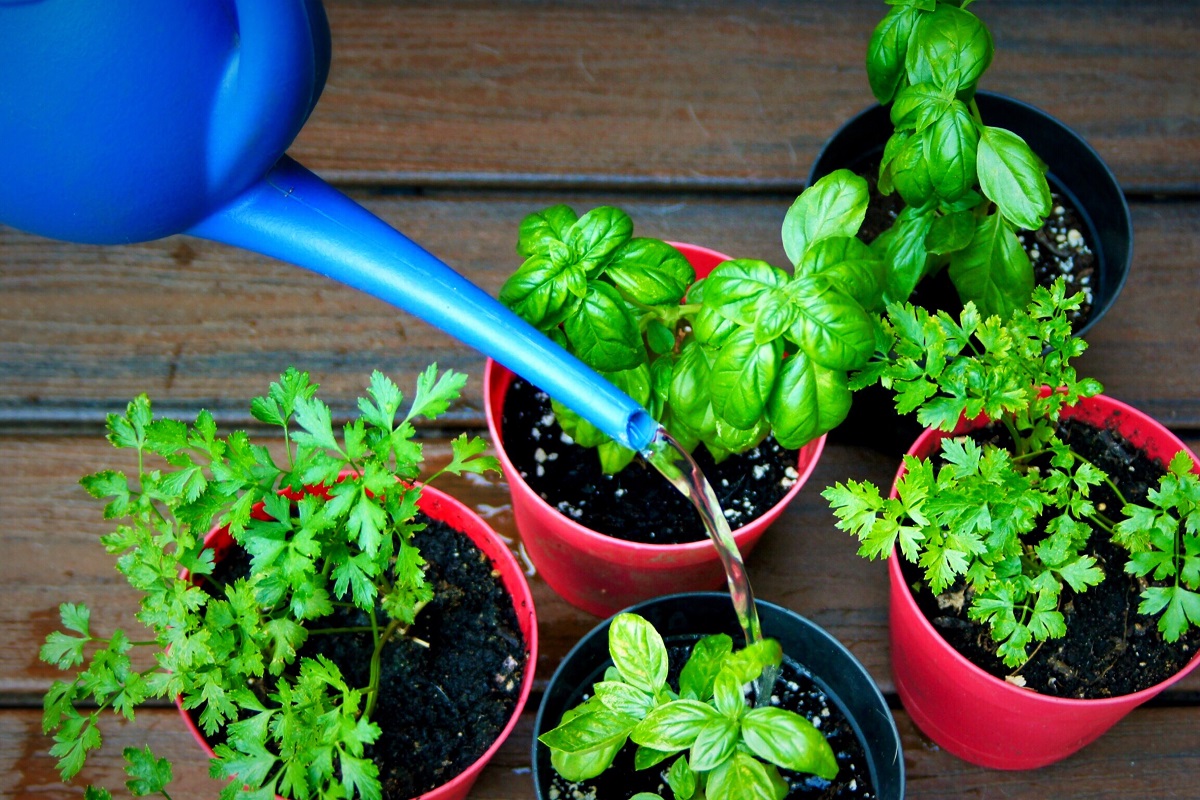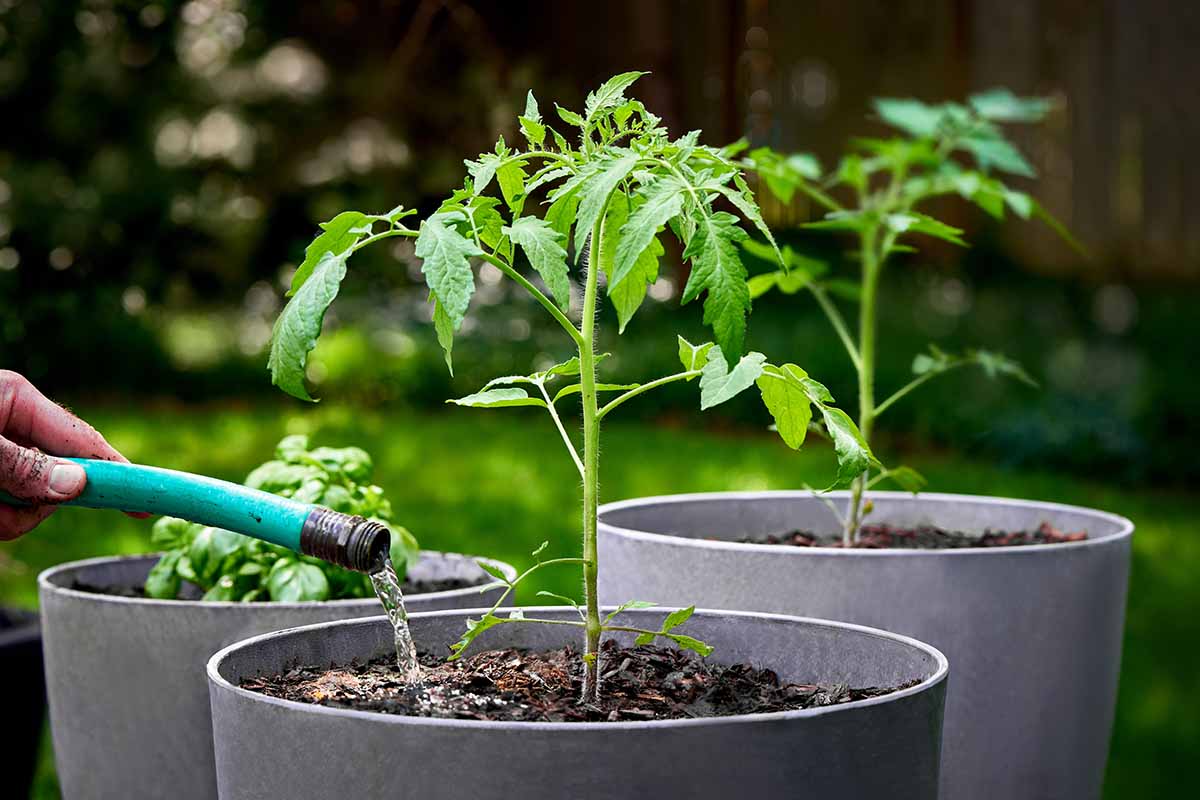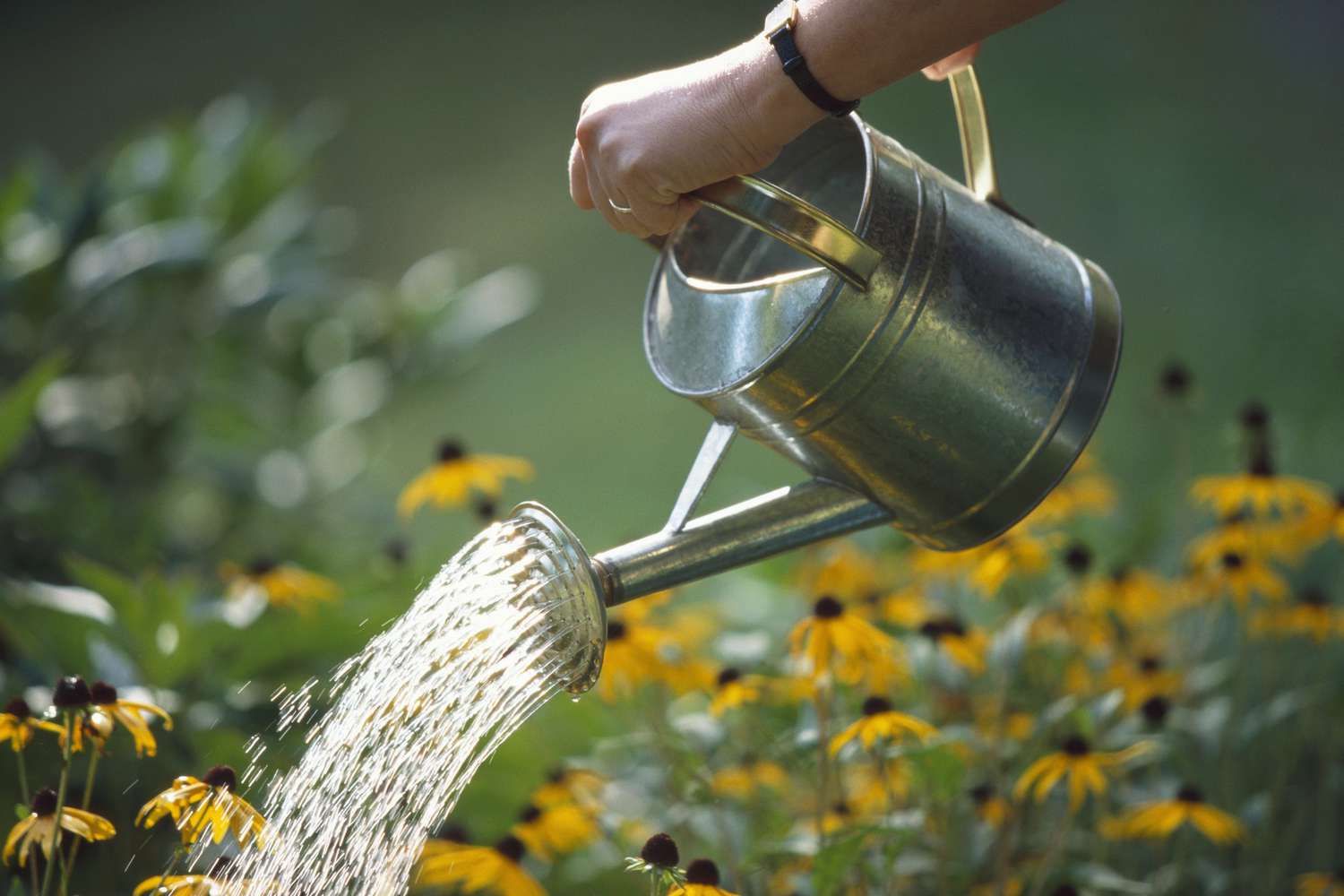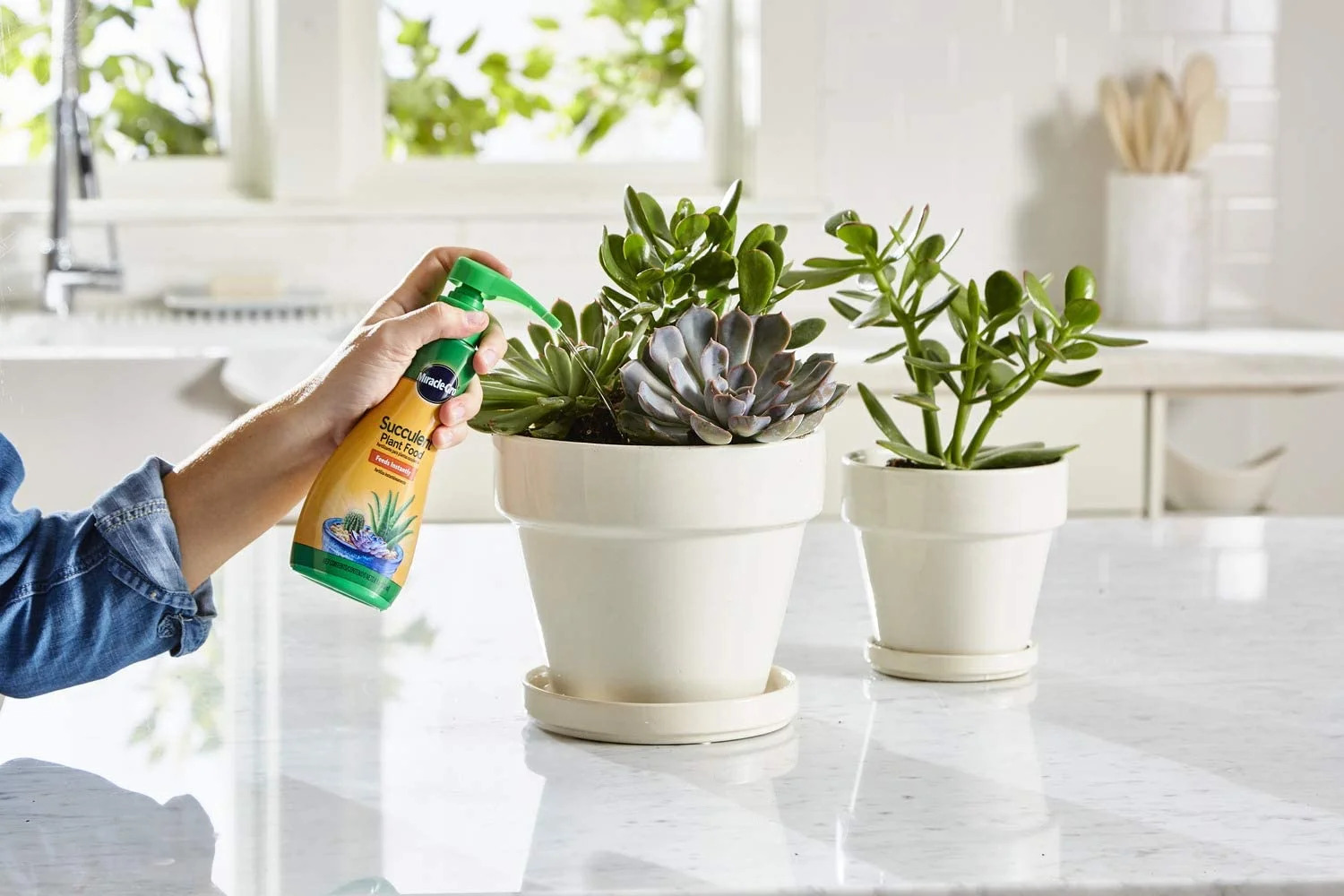Home>Gardening Techniques>Plant Care>How Often Do You Water Perennials


Plant Care
How Often Do You Water Perennials
Modified: January 22, 2024
Discover the essential plant care tips for watering perennials. Learn how often to water your plants to ensure their healthy growth and vibrant blooms.
(Many of the links in this article redirect to a specific reviewed product. Your purchase of these products through affiliate links helps to generate commission for Chicagolandgardening.com, at no extra cost. Learn more)
Table of Contents
- Introduction
- Importance of Watering Perennials
- Factors to Consider When Watering Perennials
- Signs of Underwatering Perennials
- Signs of Overwatering Perennials
- General Watering Guidelines for Different Types of Perennials
- Watering Frequency for Perennials in Different Seasons
- Watering Techniques for Perennials
- Watering Tips for Specific Types of Perennials
- Conclusion
Introduction
Welcome to the wonderful world of perennials! These versatile and beautiful plants can add color, texture, and life to any garden or landscape. Whether you’re a seasoned gardener or just starting out, understanding how to properly care for your perennials is essential for their health and long-term success.
One of the most crucial aspects of perennial care is proper watering. Water is the lifeblood of plants, and perennials rely on a consistent and adequate water supply to thrive. However, knowing how often to water your perennials can be a bit of a challenge. Factors such as plant type, weather conditions, soil type, and seasonality must all be taken into consideration.
In this article, we will explore the importance of watering perennials, the factors to consider when determining watering frequency, signs of both underwatering and overwatering, general watering guidelines for different types of perennials, watering frequency based on seasons, watering techniques, and specific watering tips for various types of perennials.
By the end of this article, you will have a comprehensive understanding of how to properly water your perennials, ensuring their health and beauty for years to come. So let’s dive in and learn how to give our perennials the hydration they need!
Importance of Watering Perennials
Watering is a fundamental aspect of plant care, and it plays a crucial role in the health and vitality of perennials. Proper watering is essential for several reasons:
1. Hydration: Water is the primary source of hydration for plants. Just like humans, plants need water to survive and carry out essential functions such as photosynthesis and nutrient absorption.
2. Nutrient uptake: Water acts as a carrier for essential nutrients and minerals present in the soil. It helps facilitate the absorption and transportation of these nutrients from the roots to the rest of the plant, ensuring proper growth and development.
3. Turgidity: Adequate water supply maintains the turgidity, or firmness, of plant tissues. This is vital for perennials to maintain their structure and overall appearance.
4. Cooling effect: Watering can help regulate the temperature of plant tissues, especially during hot summer months. It prevents excessive water loss through transpiration and keeps the plants cool and protected from heat stress.
5. Pest and disease protection: Well-hydrated perennials are less prone to attacks by pests and diseases. When plants are stressed due to lack of water, they become more susceptible to infestations and infections.
It is important to note that while water is essential for perennials, overwatering can be just as detrimental as underwatering. Finding the right balance is crucial to maintaining the health and longevity of your plants. In the following sections, we will explore the factors that influence watering frequency and some signs to look out for to ensure your perennials receive the perfect amount of water.
Factors to Consider When Watering Perennials
Watering perennials is not a one-size-fits-all approach. Several factors should be taken into consideration when determining the watering needs of your plants. Understanding these factors will help you establish an effective watering routine for your perennials. Here are the key factors to consider:
1. Plant type: Different types of perennials have varying water requirements. Some plants, like cacti and succulents, are drought-tolerant and prefer dry conditions, while others, like water lilies, thrive in consistently moist soil. Research the specific watering needs of the perennials in your garden to ensure they receive adequate water.
2. Weather conditions: Weather plays a significant role in determining how often and how much you should water your perennials. Hot and dry climates will require more frequent watering, while cooler and rainy seasons may necessitate less watering. Pay attention to the current weather conditions and adjust your watering schedule accordingly.
3. Soil type: The type of soil in your garden will influence water retention and drainage. Sandy soils drain quickly and may require more frequent watering, while clay soils retain water longer and may need less frequent watering. Understanding your soil type will help you determine how often to water your perennials.
4. Plant maturity: Young perennials typically have smaller root systems and may require more frequent watering until they are established. Mature plants, on the other hand, usually have deeper and more extensive root systems that can access water from deeper in the soil. Adjust your watering frequency accordingly, keeping in mind the age and maturity of your plants.
5. Time of day: The timing of watering can also impact the effectiveness of moisture absorption. Water your perennials in the early morning or late afternoon to allow water to penetrate the soil before evaporating in the heat of the day. Avoid watering in the evening to prevent prolonged leaf wetness, which can lead to fungal diseases.
6. Seasonality: The watering needs of perennials can vary throughout the different seasons. While plants generally require more water during active growth periods, such as spring and summer, they may require less water during dormant periods, like fall and winter. Adjust your watering schedule accordingly based on seasonal changes.
By considering these factors, you will be able to tailor your watering routine to meet the specific needs of your perennials. Paying attention to these variables will ensure that your plants receive the right amount of water for optimal growth and health.
Signs of Underwatering Perennials
Proper watering is essential to keep your perennials healthy and thriving. Underwatering, or not providing enough water to your plants, can lead to various issues. It’s important to recognize the signs of underwatering so that you can take immediate action to remedy the situation. Here are some common signs to look out for:
1. Wilting: One of the most evident signs of underwatering is wilting. When a perennial is not getting enough water, its leaves and stems can appear droopy and limp. Creating a watering schedule to prevent your perennials from wilting is crucial for their overall health.
2. Dry soil: If you notice that the soil around your perennials is consistently dry, it’s a clear indication that they are not receiving enough water. Check the top inches of the soil and ensure that it feels adequately moist and not overly dry.
3. Stunted growth: Underwatered plants may experience stunted growth. If your perennials are not growing as they should, it could be a sign that they are not getting enough water to support their growth and development.
4. Yellowing leaves: Leaves that turn yellow or begin to brown at the tips can indicate underwatering. When plants lack sufficient water, they start to conserve resources by shedding older leaves or restricting nutrient uptake, resulting in discoloration.
5. Leaf curling: Underwatered perennials may exhibit leaf curling as a response to water stress. The leaves may curl inward or have a flattened appearance, as the plant tries to reduce water loss through the leaf surface.
6. Dry and brittle foliage: If the foliage of your perennials feels dry and brittle to the touch, it’s a clear sign of dehydration. Underwatered plants tend to have leaves that are more fragile and prone to breakage.
If you observe any of these signs in your perennials, it’s important to address the issue promptly. Increase the frequency and amount of water you provide to your plants, ensuring that the soil is thoroughly moistened. Remember to strike a balance and avoid overwatering, as it can lead to its own set of problems.
In the next section, we’ll explore the signs of overwatering and how to find the right balance when watering your perennials.
Signs of Overwatering Perennials
While providing adequate water is crucial for the health of your perennials, overwatering can be just as harmful as underwatering. Overwatering can lead to root rot, nutrient deficiencies, and other issues. It’s important to recognize the signs of overwatering so that you can adjust your watering practices accordingly. Here are some common signs to watch out for:
1. Yellowing leaves: While yellowing leaves can be a sign of underwatering, it can also indicate overwatering. Overwatered perennials may develop yellow leaves that appear wilted or droopy. The excessive moisture prevents proper nutrient uptake, resulting in foliage discoloration.
2. Root rot: Overwatering can lead to root rot, a condition where the roots become waterlogged and begin to decay. This can cause the roots to turn brown or black and become mushy. Plants with root rot may exhibit stunted growth, wilting, and a foul smell emanating from the root zone.
3. Fungus and mold growth: Excess moisture creates a favorable environment for fungus and mold to thrive. Overwatered perennials may develop fungal infections such as powdery mildew or downy mildew, which can manifest as white or gray powdery patches on the foliage.
4. Slow or no growth: Overwatering can hinder the growth of perennials. The excessive moisture can saturate the soil, depriving the roots of essential oxygen. This lack of oxygen can impede nutrient absorption and lead to poor plant growth or even plant death.
5. Edema: Edema occurs when the plant cells swell and burst under the excess water absorbed. This can manifest as small blisters or bumps on the leaves, stems, or fruits of the plant. Edema is more common in heat and humidity, compounded by overwatering.
6. Foul odor: The presence of a strong, unpleasant smell in the soil or around the plant can be an indication of overwatering and potential root decay. This smell is caused by anaerobic bacteria thriving in waterlogged conditions.
If you notice any of these signs in your perennials, it’s crucial to take immediate action to correct the watering issue. Allow the soil to dry out before watering again and adjust your watering schedule to prevent overwatering in the future. It’s important to find the right balance and ensure that your perennials receive adequate moisture without being overwhelmed by excessive water.
In the next section, we’ll provide some general watering guidelines to help you establish a proper watering routine for your perennials.
General Watering Guidelines for Different Types of Perennials
While each perennial plant may have specific watering needs based on factors like climate, soil type, and maturity, there are some general watering guidelines that can help you establish a baseline for watering your plants. Here are some tips to consider:
1. Research specific plant requirements: Before watering your perennials, take the time to research and understand the specific watering needs of each plant. Some plants, like those native to arid regions, prefer infrequent but deep watering, while others may require more frequent watering. Look for information specific to your plant species and take note of any special considerations.
2. Water deeply and infrequently: Instead of lightly watering your perennials every day, it is generally more beneficial to give them a thorough watering less often. This encourages the roots to grow deeper into the soil, seeking out water and nutrients. Aim for a deep watering that penetrates at least 6-8 inches into the soil.
3. Mind the season: Adjust your watering schedule according to the season. During the hotter months or drought conditions, you may need to increase the frequency of watering. In cooler seasons or during periods of rainfall, you can reduce the watering frequency. Be sure to monitor the moisture levels in the soil and adjust as needed.
4. Monitor soil moisture: To determine when to water, it’s essential to monitor the moisture levels in the soil. Stick your finger about 1-2 inches into the soil around the plant to check for moisture. If it feels dry at that depth, it’s time to water. Avoid watering if the soil feels moist or wet, as overwatering can lead to root rot and other issues.
5. Use mulch: Applying a layer of organic mulch around your perennials can help retain soil moisture by reducing water evaporation and preventing weed growth. Mulch also acts as an insulating layer, protecting the roots from extreme temperatures. Apply a 2-3 inch layer of mulch, making sure to keep it a few inches away from the plant stems to prevent rot.
6. Consider the time of day: Water your perennials in the early morning or late afternoon to ensure that the plants have ample time to absorb the water before any water loss through evaporation. Avoid watering during the hottest part of the day, as the water may evaporate before being absorbed by the roots.
7. Adjust for container-grown perennials: Perennials planted in containers may require more frequent watering than those planted in the ground, as containers tend to dry out faster. Monitor the moisture levels in the soil and water as needed to ensure that the plants don’t become parched.
While these general guidelines can provide a starting point, it’s important to remember that each plant and growing environment is unique. Monitor your perennials closely, observe how they respond to watering, and make adjustments as necessary to meet their specific needs.
In the next section, we’ll delve into specific watering frequencies for perennials in different seasons to help you refine your watering routine even further.
Watering Frequency for Perennials in Different Seasons
The watering needs of perennials can vary depending on the season and weather conditions. Understanding how to adjust your watering frequency throughout the year will help ensure that your perennials receive the right amount of water for optimal growth and health. Here are some guidelines to follow:
Spring: In the spring, when temperatures begin to rise and plants start actively growing, it’s essential to gradually increase watering. Monitor the soil moisture and water when the top inch of soil feels dry. As the weather warms up, you may need to water more frequently to provide enough moisture for the plants to establish strong root systems.
Summer: Summer is when perennials are in their peak growth phase and require consistent watering. The hot weather and increased evaporation rates call for more frequent watering. In general, aim to water deeply once or twice a week, ensuring that the soil is moistened to a depth of 6-8 inches. Water early in the morning or late in the evening to minimize water loss due to evaporation.
Fall: As temperatures start to cool down in the fall, plants begin to enter their dormant phase. Reduce watering frequency during this time, as the cooler weather and lower evaporation rates mean that the plants require less moisture. Water only when the soil feels dry, but be cautious not to let the soil dry out completely, as some perennials may still need some moisture to survive the winter.
Winter: In winter, the watering requirements for perennials are generally lower. Perennials that go dormant during the winter months require minimal watering, if any at all. Be mindful of the moisture levels in the soil and water sparingly only when necessary. Consider the amount of rainfall and adjust your watering accordingly.
While these guidelines provide a starting point, it’s important to consider other factors such as weather conditions, plant species, and the specific needs of your garden. Monitor your perennials closely and adjust the watering frequency as needed throughout the seasons to provide them with adequate moisture without overwatering.
Keep in mind that these guidelines are not set in stone and should be adjusted based on your specific climate, soil conditions, and the individual needs of your plants. It’s always best to observe your perennials closely and make watering decisions based on the moisture levels in the soil and the overall health of your plants.
In the next section, we’ll discuss some useful watering techniques that can help optimize the watering process for your perennials.
Watering Techniques for Perennials
Proper watering techniques are essential to ensure that your perennials receive the right amount of water and to promote healthy growth. Here are some effective watering techniques to optimize the watering process for your perennials:
1. Direct the water to the roots: When watering your perennials, it’s important to focus on delivering the water to the root zone. Direct the water at the base of the plants, near the soil level, to ensure that the roots can easily access the moisture. Avoid watering the foliage excessively, as this can promote the spread of diseases and encourage fungal growth.
2. Use a soaker hose or drip irrigation: Soaker hoses or drip irrigation systems are excellent options for watering perennials. These systems provide a slow and steady release of water directly to the root zone, minimizing water loss through evaporation and ensuring efficient water absorption by the plants. This method also helps prevent water splashing on the leaves, reducing the risk of fungal diseases.
3. Apply water deeply: When watering, aim to moisten the soil to a depth of 6-8 inches. This encourages the roots of the perennials to grow deeper, promoting a stronger and more resilient plant. Shallow watering can lead to shallow root growth, making the plant more susceptible to drought and other stresses.
4. Mulch to retain moisture: Apply a layer of organic mulch around your perennials to help retain soil moisture. Mulch acts as a barrier, reducing water evaporation from the soil surface and keeping the roots cool. It also helps suppress weed growth, which can compete with your perennials for water and nutrients.
5. Water early in the day: Watering your perennials in the early morning allows the plants to absorb moisture before the heat of the day causes evaporation. This timing also gives the foliage and stems time to dry out during the day, reducing the risk of fungal diseases that thrive in moist conditions.
6. Adjust watering during rainy periods: During periods of heavy rainfall, adjust your watering schedule to prevent waterlogging and excess moisture. Monitor the soil moisture and only water if the soil feels dry. Adequate drainage is crucial to prevent root rot and other water-related issues.
7. Monitor moisture levels: Regularly check the moisture levels in the soil to ensure that your perennials are receiving adequate water. Stick your finger into the soil to a depth of 1-2 inches and assess the moisture level. Adjust your watering schedule based on the moisture needs of your plants.
Implementing these watering techniques will help ensure that your perennials receive the right amount of water and maximize their growth potential. Remember to consider other factors such as weather conditions, plant species, and soil type when determining the appropriate watering technique for your garden.
In the next section, we’ll provide specific watering tips for different types of perennials, taking into account their unique characteristics and requirements.
Watering Tips for Specific Types of Perennials
Watering requirements can vary among different types of perennials due to their distinct characteristics and preferences. Understanding the specific needs of each type of perennial will help you provide the appropriate amount of water for their optimal growth and health. Here are some watering tips for different types of perennials:
1. Succulents and Cacti: Succulents and cacti are drought-tolerant plants that have adapted to arid environments. These plants are prone to root rot if overwatered. Water sparingly, allowing the soil to dry out completely between waterings. When you do water, ensure that the water penetrates deeply into the soil to encourage the roots to grow deep.
2. Ferns: Ferns prefer consistently moist soil but not waterlogged conditions. Avoid overwatering, which can lead to root rot. Water thoroughly and allow the top few inches of soil to dry out between waterings. Mist the foliage occasionally to increase humidity and prevent leaf dehydration.
3. Water Lilies and Aquatic Perennials: Water lilies and other aquatic perennials thrive in water-rich environments. Ensure that they are submerged in water, with the water level reaching the appropriate height for the specific plant. Monitor the water level and replenish as needed to maintain the desired depth.
4. Mediterranean Plants: Mediterranean plants, such as lavender, rosemary, and sage, prefer well-draining soil and are tolerant of drought conditions. Water infrequently, but deeply, allowing the soil to dry out between waterings. Water at the base of the plants to prevent leaf wetness, which can lead to fungal diseases.
5. Shade-Loving Perennials: Shade-loving perennials often require less water than those in full sun. The soil in shady areas tends to retain moisture for longer periods. Check the soil moisture regularly and water when the top inches of soil feel dry. Be cautious not to overwater, as this can lead to waterlogged conditions and root problems.
6. Native Perennials: Native perennials are adapted to the local climate and are often more tolerant of drought conditions. Once established, they may require less frequent watering. However, it’s still important to provide supplemental water during prolonged dry spells to ensure their survival and health.
7. Flowering Perennials: Flowering perennials benefit from consistent moisture during their active growth periods. Water deeply and evenly to promote healthy flower production. Mulching around the base of the plants can help retain soil moisture and suppress weed growth, ensuring that the perennials receive the necessary nutrients and water.
These are just a few examples of watering tips for specific types of perennials. It’s crucial to research the specific requirements of the perennials in your garden to provide them with the ideal watering conditions. Experimentation, observation, and thoughtful adjustment of your watering practices will help you find the perfect balance for each type of perennial in your garden.
Now that you have a better understanding of watering perennials, you can implement these tips to keep your plants thriving and looking their best. Remember to always monitor the moisture levels in the soil and adjust your watering frequency accordingly. With the right care and attention, your perennials will reward you with their beautiful blooms and lush foliage.
Conclusion
Proper watering is essential for the health and vitality of your perennial plants. Understanding the importance of watering, considering factors such as plant type, weather conditions, and soil type, and recognizing the signs of both underwatering and overwatering are all key to successfully caring for your perennials. By following general watering guidelines, adjusting watering frequency based on the seasons, implementing effective watering techniques, and considering the specific needs of different types of perennials, you can ensure that your plants receive the right amount of water for optimal growth.
Remember to research the specific watering requirements of your perennials, observe your plants closely, and make adjustments as needed. Water deeply and infrequently, directing the water to the roots, and use techniques such as soaker hoses or drip irrigation systems. Monitor soil moisture, adjust for seasonal changes, and be mindful of the time of day when watering. Mulching, particularly around the base of the plants, can help retain moisture and suppress weeds.
For specific types of perennials, adapt your watering practices accordingly. Succulents and cacti thrive with infrequent watering, while ferns prefer consistently moist soil. Mediterranean plants and shade-loving perennials have their own unique requirements. Native perennials are more drought-tolerant once established, and flowering perennials benefit from consistent moisture during their active growth.
By applying these watering techniques and tips, you can create a healthy and vibrant garden filled with thriving perennials. Remember to strike a balance, avoiding both underwatering and overwatering, and always consider the specific needs of your plants and the conditions in your garden. With proper watering, your perennials will flourish, providing you with beautiful blooms and lush foliage for years to come.


